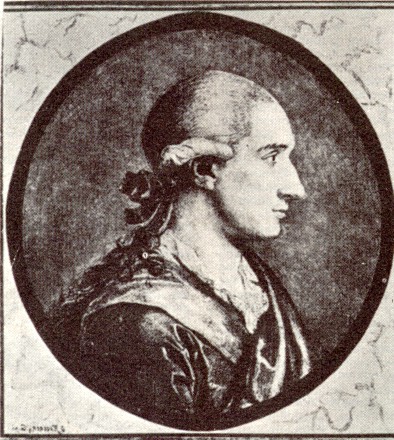RESUMEN PARA REPERTORIOS BIBLIOGRÁFICOS
TÍTULO: JOHANN WOLFGANG GOETHE. WAHRHEIT UND WAHRSCHEINLICHKEIT IN DER KUNST. EIN GESPRÄCH. «VERDAD Y VEROSIMILITUD EN LAS OBRAS DE ARTE. UN DIÁLOGO»
 TRADUCTOR: Regula Rohland de Langbehn
TRADUCTOR: Regula Rohland de Langbehn
LUGAR: Universidad de Buenos Aires
TÍTULO DE LA REVISTA: Analecta Malacitana, XX, 2, 1997
RESUMEN: Se transcribe y se traduce al castellano uno de los ensayos esenciales escritos por Goethe, que se desarrolla en un ameno diálogo. Se refiere a conceptos fundamentales de su teoría sobre el arte, ante todo en lo que atañe a la relación entre arte y naturaleza, y a su concepto de arte como microcosmos. Éste se suele relacionar con su amistad con Karl Phillip Moritz, pero tiene una ascendencia que, basada en la filosofía de Leibnitz, también pasa por Gottsched y Lessing. La clasificación que en este diálogo establece de los receptores de la obra de arte según su aptitud de responder a ella es esencial para la apercepción de Goethe en lo que se refiere al efecto que tiene la obra de arte sobre el público. Se relaciona con el concepto del «diletantismo», que ha sido elaborado en diversos ensayos por el poeta.
El contenido se remonta al viaje que debía llevar a Italia en 1797. Goethe paró en Frankfurt y allí vio la ópera Palmyra de Antonio Salieri, con las decoraciones del pintor milanés Giorgio Fuentes (1756-1822), que suscitaban su admiración, de manera que fue a visitarlo. El ensayo refleja temarios de las conversaciones mantenidas en esta ocasion. Von Einem conecta el artículo con la carta a Schiller del 14 de agosto 1979, en la que Goethe exige del pintor de decoraciones que haga tableaux, ambientes que representan «lo fastuoso, lo elevado, lo noble», cuando esencialmente son «leves, artificiosos y multiformes», o sea, que haga transparente lo artificioso de la decoración.
El texto se transcribe de Johann Wolfgang Goethe. Werke. Hamburger Ausgabe. Tomo 12. Schriften zur Kunst. Schriften zur Literatur. Maximen und Reflexionen. Ed. Herbert von Einem y Hans Joachim Schrimpf. Hamburg: Wegner, 6. ed. 1967. Originalmente fue impreso en la revista Propyläen, I, I, 1798. Una breve introducción se refiere con más detalle a estos hechos y ubica el ensayo en la obra ensayística del Goethe.
ABSTRACT: One of the most important essays by Goethe is reproduced in German and in a Spanish translation. It is a brief dialogue which refers to some of the basic concepts Goethe developed on art theory, especially on the relations between art and nature, and to his concept of art as a microcosm. This concept usually is connected to his friendship with Karl Phillip Moritz, but it is really based on Leibnitz's philosophical concepts and can also be found in Gottsched and Lessing. The classification of the recipients of the wort of art, established in this dialogue, according to their aptitude of reacting to it, is essential for Goethe's thoughts concerning the effect of the work of art on its public. It is related to the concept of «dilettantism», which has been developed in various essays by the poet. The essay was written after the trip to Italy Goethe had planned to take in 1797, which in the end took him only as far as Switzerland. Goethe stayed for a time in Frankfurt and there he saw the opera Palmyra by Antonio Salieri, with decor by the painter Giorgio Fuentes. Goethe admired this decor and he visited the painter. This visit seems to have inspired the essay on «Truth and verisimilitude in the works of Art». Von Einem, who edited the essays on art by Goethe and wrote a book on his theory, connected this essay with the letter Goethe wrote to Schiller on august 14th, 1979, in which Goethe says that the decor designer is expected to paint tableaux, ambiences representing «the fastuos, the sublime, the noble» while they are essentially «light, artificious and multiform», asking to make transparent the artificiousness of the decoration. The text is being transcribed from Johann Wolfgang Goethe. Werke. Hamburger Ausgabe. Vol. 12. Schriften zur Kunst. Schriften zur Literatur. Maximen und Reflexionen. Ed. Herbert von Einem & Hans Joachim Schrimpf. Hamburg: Wegner, 6. ed. 1967. It appeared originally in the review Propyläen, I, I, 1798. In her introduction the translator gives some more details and establishes relations of this brief essay to the rest of Goethes essayistical work.
NOTAS: El arte y la ilusión. La ilusión como nivel bajo del goce artístico
DESCRIPTORES: Naturaleza y arte / imitación / ilusión / teatro / obra de arte-microcosmos. Historia natural
KEY-WORDS: Nature and art / imitation / illusion / theater / work of art-microcosmos. Natural history
IDENTIFICADORES: Goethe, Johann Wolfgang von / Fuentes, Giorgio / Schiller, Friedrich /Pausanias / Von Einem, Erich
TOPÓNIMO: Italia. Frankfurt
PERÍODO HISTÓRICO: Siglo XVIII